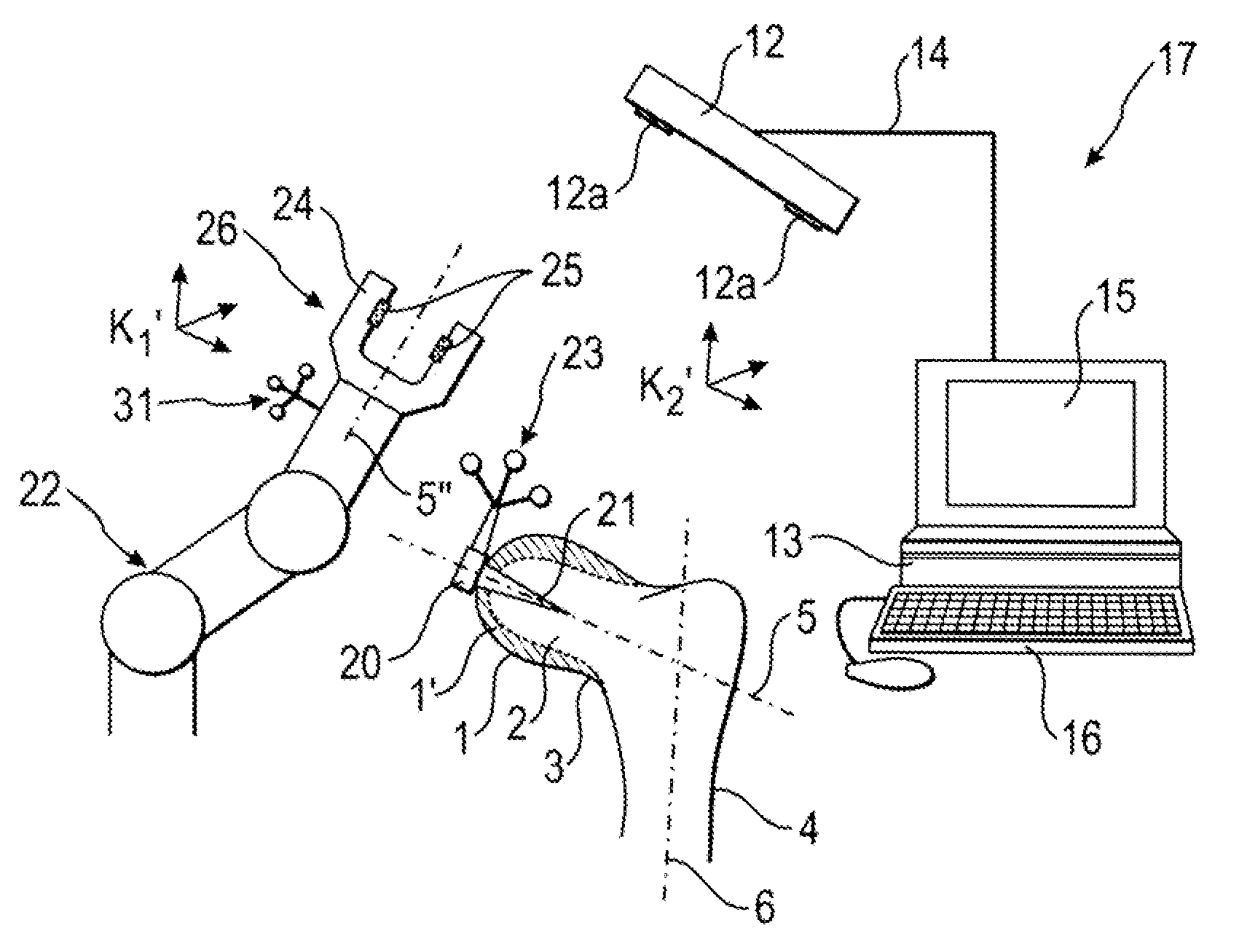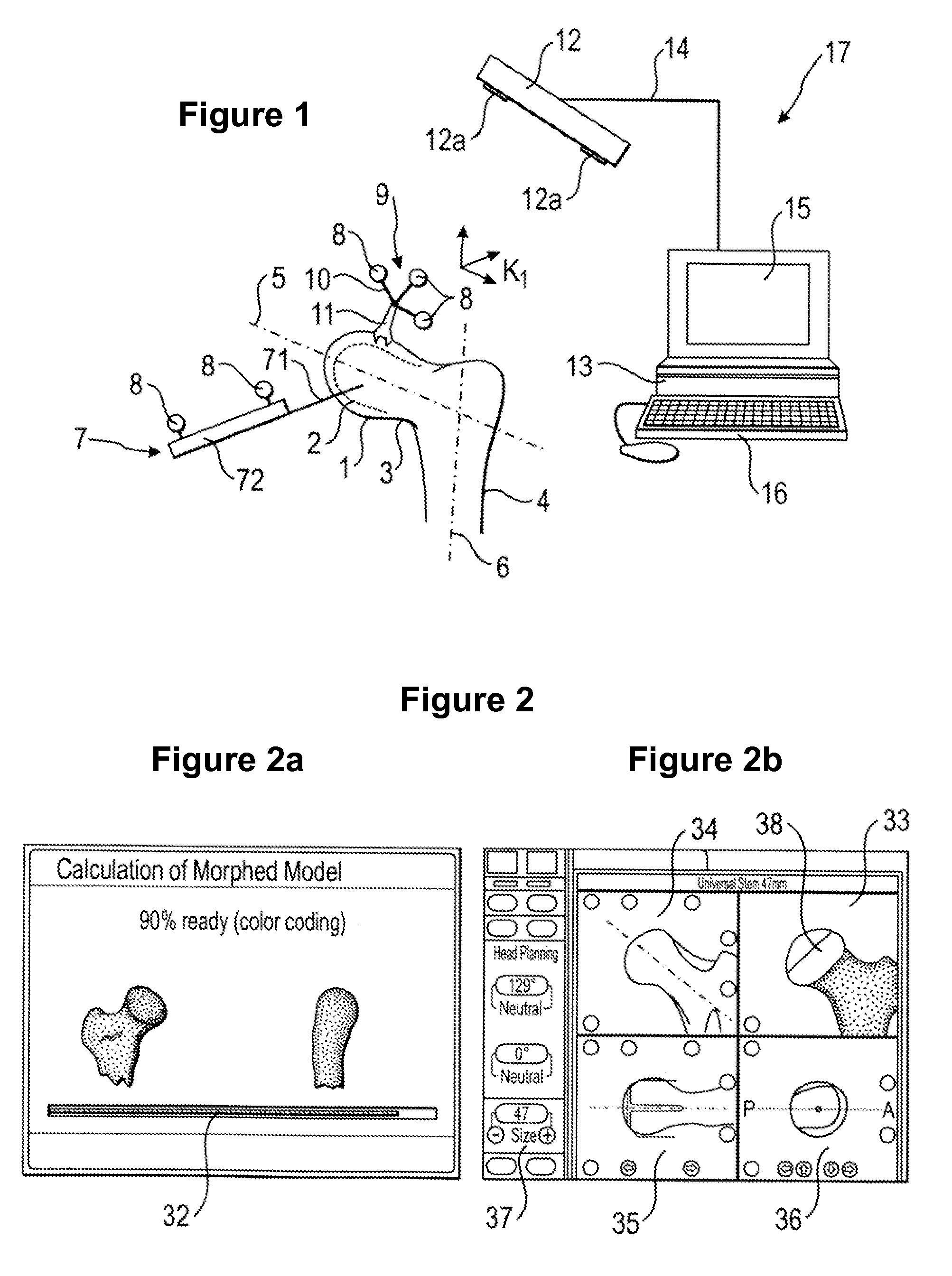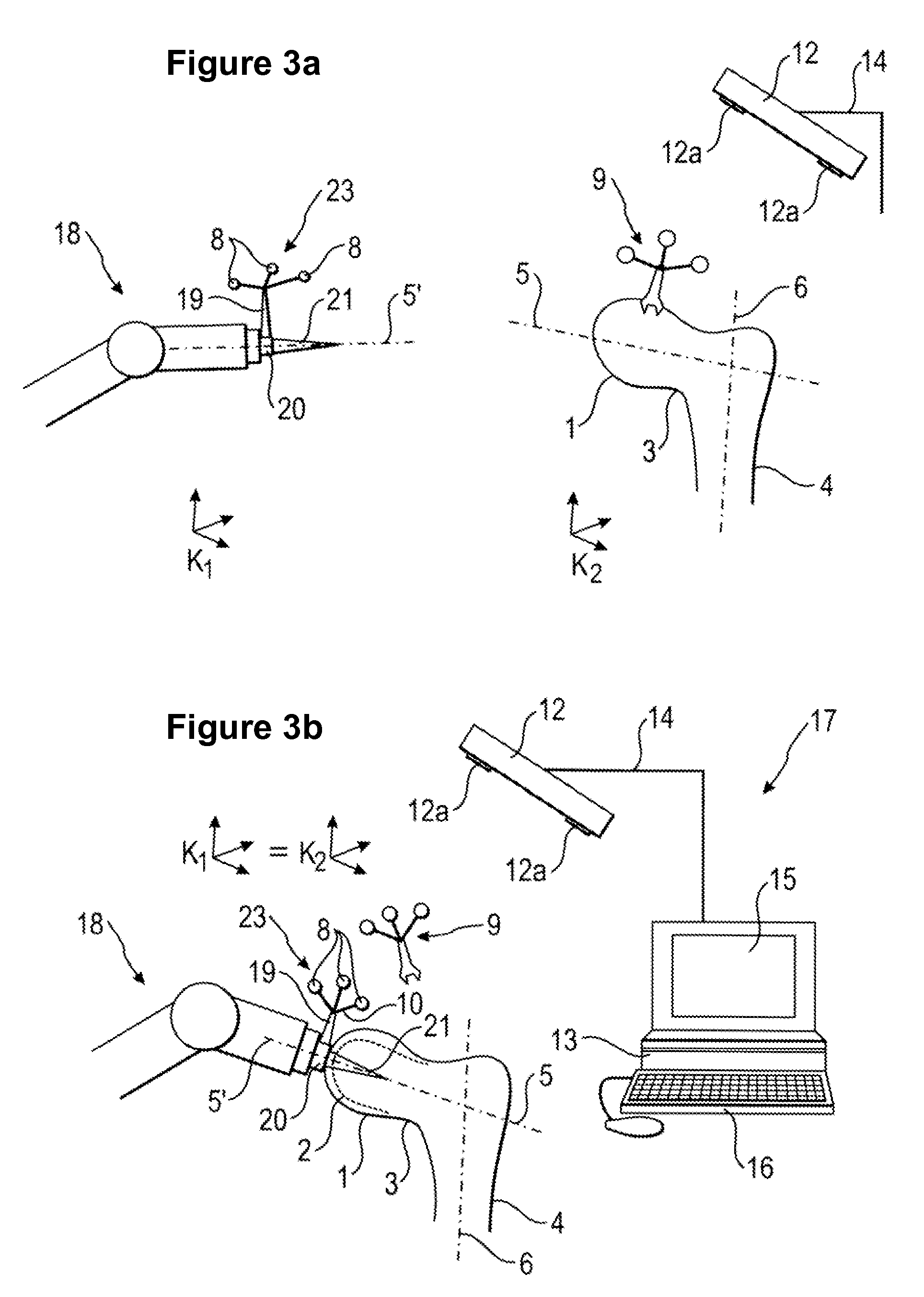Tool attachment for medical applications
a technology for medical applications and tools, applied in the field of tools for medical applications, can solve the problems of femoral neck fracture and major uncertainties, and achieve the effect of increasing the stability of the connection
- Summary
- Abstract
- Description
- Claims
- Application Information
AI Technical Summary
Benefits of technology
Problems solved by technology
Method used
Image
Examples
Embodiment Construction
[0051]FIG. 1 shows a section of a femoral bone comprising a bone shaft 4, a femoral head 1 and a femoral neck 3. The femoral head 1 is to be conformed to the shape 2 to be generated (the machining shape 2) with the aid of a tool attachment 26 in accordance with the invention. The shaft 4 of the femoral bone exhibits a longitudinal axis 6; the femoral head 1 exhibits a longitudinal axis 5 which advantageously coincides with the longitudinal axis of the machining shape 2. A marker device (bone marker device) 9 comprising markers 8, marker holders 10 and a holding element 11 is attached to the femoral head 1. A pointer 7 comprising a holding grip 72 and two markers 8 is used to measure off and / or register the geometry of the original surface of the femoral head 1 which is to be machined. To this end, the tip 71 of the pointer is guided along the surface. A surgical navigation system 17 comprises: a transmitter, in particular an infrared transmitter 12; two receivers, in particular two ...
PUM
 Login to View More
Login to View More Abstract
Description
Claims
Application Information
 Login to View More
Login to View More - R&D
- Intellectual Property
- Life Sciences
- Materials
- Tech Scout
- Unparalleled Data Quality
- Higher Quality Content
- 60% Fewer Hallucinations
Browse by: Latest US Patents, China's latest patents, Technical Efficacy Thesaurus, Application Domain, Technology Topic, Popular Technical Reports.
© 2025 PatSnap. All rights reserved.Legal|Privacy policy|Modern Slavery Act Transparency Statement|Sitemap|About US| Contact US: help@patsnap.com



